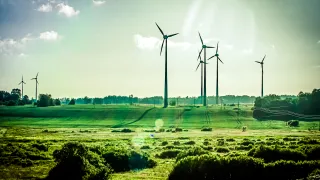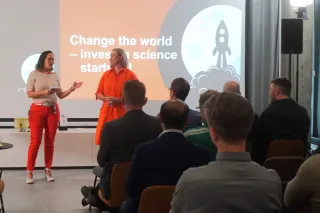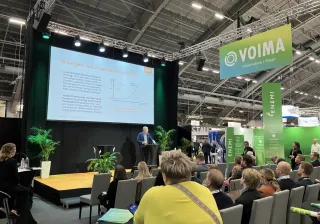Energy is everywhere. It is used every day. However, it does not disappear, but simply changes form. Electrical energy forms part of our lives everywhere: in heating, cooling, transport, lighting, and particularly in turning the wheels of industry.
As energy is part of almost all activities, it is no surprise that its production and distribution are a major, global business. However, the current system is at a crossroads.
Power generation burdens nature and the environment, and is having a major impact on climate change and the future of the planet. Air pollution from manufacturing also affects health. The World Health Organization estimates that more than 3 million people die annually from air pollution caused by power generation and vehicle emissions. There are other important perspectives. According to the International Energy Agency, more than 1.2 billion people mainly in Africa are completely without electricity. There is a clear link between poverty and low energy availability.
Finding solutions to energy production challenges is now one of the key objectives of VTT's strategy work. How much energy we use, and from what kinds of sources, is important to the future of the world.
Energy can also be saved and more smartly consumed. Numerous devices, buildings, vehicles and industrial processes can be renewed in order to improve energy efficiency and reduce emissions. District heating networks can be utilised when collecting and distributing waste heat. Digitalisation can help us to discover new innovative solutions with an impact on various levels of society.
VTT has already produced research and results many times over in this area. Photonics are being used to develop energy-efficient and dimmable LED lighting systems, which consume considerably less energy than traditional systems. The current Internet would not exist without photonics. Photonics enable energy-efficient, high-speed data transmission through fibre optic cables, as well as new digital applications and services via the Internet.
Energy efficiency can also be promoted by creating better conditions for flexibility electricity consumption on the electricity market. Digitalisation enables new operating models and smoothens out peak consumption in places such as shopping centres, households and other premises. The industry also benefits from raw material research and, for example, the efficient evaluation and analysis of biomass through satellite imagery and data analysis. Virtual power plants – where different actors and elements act as energy producers, warehouses and users – are also part of the future.
Energy saving and environmentally friendly production are important to nature and all of us. This magazine gives examples of how, together with various other players, VTT is using new technology and solutions to respond to this global challenge.






